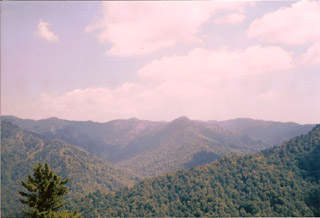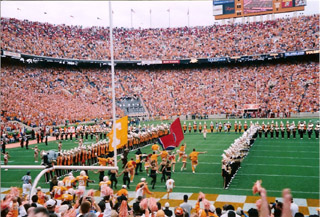 As East Tennesseans, we are a people defined by a common geography and a shared history that set us apart from the rest of the South. We are Native Americans and frontiersmen, business and political leaders, farmers and miners, makers of textiles and leaders in technology, rebels and educators. We are the hillbillies of myth and the mountain and valley people of flesh and blood. We lived longer with candlelight and oil lamp than most Americans, but when we lit our houses with TVA, we powered the nation. As East Tennesseans, we are a people defined by a common geography and a shared history that set us apart from the rest of the South. We are Native Americans and frontiersmen, business and political leaders, farmers and miners, makers of textiles and leaders in technology, rebels and educators. We are the hillbillies of myth and the mountain and valley people of flesh and blood. We lived longer with candlelight and oil lamp than most Americans, but when we lit our houses with TVA, we powered the nation.
We practice a fierce independence. We hold fast to our traditions. We love our homeplace. We are East Tennesseans.
- from the East Tennessee Historical Society
East Tennessee is indeed a special place, and what makes it so can be traced back to its people. Having more in common with others of Appalachian heritage than West Tennesseans, there is a sense of pride that binds East Tennesseans together. That pride has been here since the beginning, when the State of Franklin was established by revolution in 1784 out of the western counties of North Carolina (Sullivan, Washington, Greene, and Davidson). When the State of Franklin was disbanded and later became part of Tennessee in 1796, that unity was not lost and indeed remains to this day.
Our area of the country has produced many noteworthy Americans. Some of the current East Tennessee counties were named after them and other patriots, including:
Anderson: in honor of Joseph Anderson, U.S. Senator, judge, and U.S. Comptroller of the Treasury;
Blount: in honor of William Blount, member of the Continental Congress, U.S. Senator (where he served as Speaker), and founder of Knoxville;
Grainger: in honor of Mary Grainger, first lady of what would become Tennessee;
Greene: in honor of Nathanael Greene, Revolutionary War Commander who forced the British out of Georgia and the Carolinas;
Jefferson: in honor of Thomas Jefferson, the 3rd President of the United States;
Knox; in honor of Henry Knox, Artillery Commander in the Revolutionary War and the 1st U.S. Secretary of War;
Roane: in honor of Archibald Roane, Continental Army officer, Constitutional Convention delegate, nearly unanimous choice as the second Governor of Tennessee, and judge;
and Sevier: in honor of John Sevier, Governor of the State of Franklin, militia leader, congressman representing Tennessee and North Carolina, and the first Governor of Tennessee.
In addition to the above, the names of frontiersmen like Davy Crockett and Daniel Boone, politicians like Andrew Jackson, Andrew Johnson, and Howard Baker, jurists like Abe Fortas and Ray Jenkins, and performers like Chet Atkins and Dolly Parton are associated with Tennessee nationwide.
 Citizens of Knoxville certainly recognize that their city would not be same without The University of Tennessee. Originally chartered in 1794 as Blount College, UT was founded as part of the post-revolutionary trend of college founding in order to create an educated citizenry for the new experiment in republican government. After a large period of the 19th Century when the institution was known as East Tennessee University, the school was renamed The University of Tennessee in 1879, after which time UT Presidents Charles Dabney and Brown Ayres successfully reshaped the school into becoming what it is today. Overall, UT has produced one Nobel laureate, seven Rhodes Scholars, six Pulitzer Prize winners, two National Book Award winners, nine U.S. senators, one associate justice of the U.S. Supreme Court, and over 230,000 living alumni.
Citizens of Knoxville certainly recognize that their city would not be same without The University of Tennessee. Originally chartered in 1794 as Blount College, UT was founded as part of the post-revolutionary trend of college founding in order to create an educated citizenry for the new experiment in republican government. After a large period of the 19th Century when the institution was known as East Tennessee University, the school was renamed The University of Tennessee in 1879, after which time UT Presidents Charles Dabney and Brown Ayres successfully reshaped the school into becoming what it is today. Overall, UT has produced one Nobel laureate, seven Rhodes Scholars, six Pulitzer Prize winners, two National Book Award winners, nine U.S. senators, one associate justice of the U.S. Supreme Court, and over 230,000 living alumni.
What most East Tennesseans identify with The University of Tennessee, though, are their athletic teams. After over a decade of mediocre results, the Tennessee football program is showing a return to prominance under Head Coach Josh Heupel. Coach Rick Barnes has made Tennessee basketball a consistent national power, and Coach Tony Vitello has raised Tennessee baseball to new heights. With consistent national title campaigns by golf, tennis, swimming, and track and field, the Tennessee Vols have an athletic program that is woven into the fabric of everyday life in East Tennessee.
|